My latest for parents and teachers who work with teens is here. Once you know how to spot anxiety, the next trick is to figure out what’s triggering it.
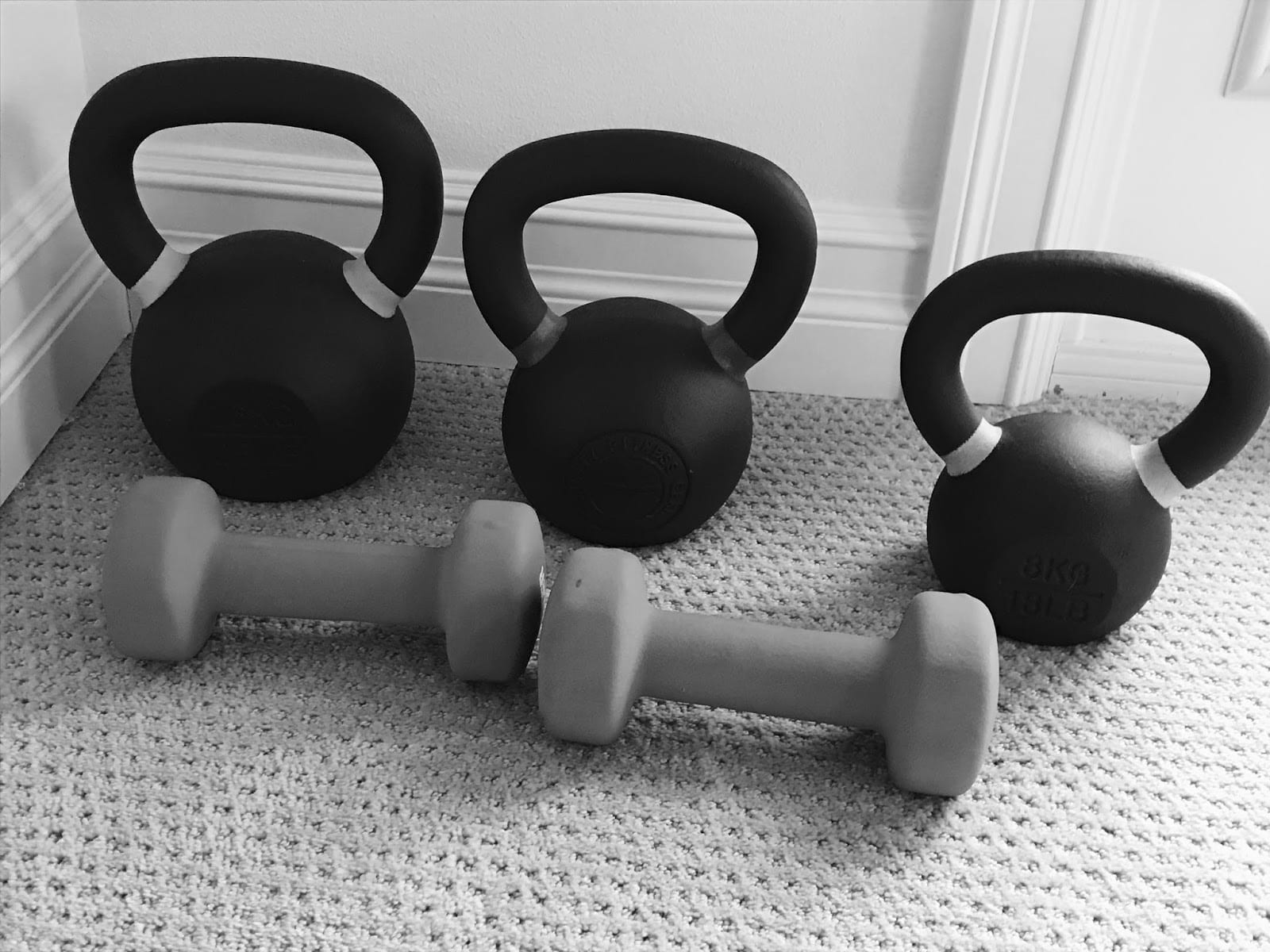
Part One is here.
This one’s for Birdie.
Oh, Birdie. I don’t know you, but I know you. We’ve never met, but I hear you.
Birdie left a comment on the previous post that I’ll excerpt. She wrote, in reference to seeking professional help to process the trauma she experienced as a child, “…I can’t be helped and soul destroying because it means I am really messed up. I am so afraid of opening Pandora’s box and becoming unable to deal with what lies waiting. But I am tired. Tired of never being happy. Tired of always feeling anxious. Tired of always, always being afraid.”
Talk about ‘bringing the whole house down.’ That’s what compartmentalizing does to us. It makes us feel safe for the moment, but it ultimately destroys us from the inside out. Because when we hide those things away – either for later or for what we think is forever – we deprive ourselves of community and support.
Human beings are social creatures. We are designed to live with each other. Our bodies respond on a molecular level to touch and interaction from each other – our adrenal glands activate, our neurological systems light up, we secrete hormones that make us feel safe and loved and happy when we let ourselves share experiences with other people (and animals – never underestimate the power of a soft, furry creature to snuggle up to).
But when we wall of parts of our human experience, we relegate ourselves to holding what are often the most traumatic and painful things all by ourselves. It is akin to telling everyone that we would like their help carrying the 20lb. box of papers but that they can go home after that because we’ll figure out how to lug that 200lb. desk in the corner alone. Or not at all. There are so many reasons we do that – shame, denial, overwhelm. We hate that desk. Maybe we will just leave it there and never look at the corner where it sits, heavy and ugly.
It is counterintuitive to expect ourselves to bear the heaviest weights alone. We can’t do it, no matter how much we want to or how hard we try. And we aren’t designed for it. But when we compartmentalize, that’s what we’re setting ourselves up for – isolation, solo work.
So, Birdie, if you’re reading this, know that even as you wait for a therapist who is the right one to help you work through that pile of stuff you’ve hidden in the corner, you aren’t alone. While it’s important to find skilled counselors to help us dig through the deepest traumas, in the meantime, there are people out there who will help you support the weight of what you’ve got sitting there. Let them. Don’t worry about whether they’ll get something on their clothes. Don’t think about how it smells or what it looks like. Just know that, together, we can bear so much more weight than we think we can, and that there are people out there who care for you who would like nothing more than to hoist up a corner and take some of the pressure off of you. That’s how we’re designed. That’s what we do for each other. And while it takes some practice (often, years of practice), that feeling of relief that you get when others come along to help bear the load is the beginning of healing.
Thank you for your courage.
You will get there from here. I know it. You won’t do it alone, but that’s the sweetest part of this. You’ll discover, along the way, which of your friends and family is really great at unpacking, cleaning up, and showing up. Let them. Don’t apologize. It’s how we’re designed. Embrace it and know that you were never supposed to hold all of this by yourself.
 |
| By Creator:Giulio Bonasone – http://www.metmuseum.org/art/collection/search/392735This file was donated to Wikimedia Commons by as part of a project by the Metropolitan Museum of Art. |
It is just so tempting, and it’s also something many of us are conditioned to do from the time we’re little: set aside strong emotions or difficult thoughts until later.
I can’t deal with that right now.
I can’t think about that right now.
Let me just get through this.
Compartmentalization has its purpose, to be sure. When you’re physically occupied by something else – say, driving – you really need to focus on the task at hand. But all too often, when we seek to tuck something away “for later,” what we are really doing is hoping it will stay tucked away so that we don’t ever have to see it again. And unfortunately, the kinds of things we generally hope to never have to see again are usually the kinds of things that will end up demanding our attention in one way or another at some point.
I’ve had both extreme examples of this (repressing the memories of childhood sexual assault for decades) and moderate examples (putting aside my fears and grief at the serious illness my husband struggled with so that I could get through the day raising two toddlers), and both times it came back to bite me in the ass. In the first case, I developed a severe anxiety disorder that made it hard for me to work and live the life I wanted to live for many years until I examined and explored the abuse, and in the second, I spent three years working with a therapist to overcome a depression that nearly drove me to suicide.
What I’ve learned is that while I may not have the luxury of expressing my emotions and really sitting with my grief every time it shows up, if I don’t acknowledge it to some degree in real-time, I will suffer the consequences. Because here’s the thing: if I just keep tucking it away in some box labeled “Later,” what are the odds that I will ever voluntarily choose to go back and open that box of pain and look at it? Why wouldn’t I just keep it in the corner, always finding some other thing to keep me busy. Who in their right mind would want to set aside time and energy to reopen a container of sadness and grief?
So these days, when I’m confronted with a particularly difficult situation, I do my best to fold it into my life. I cry while I’m walking the dogs or doing dishes. I call a friend during lunch and ask for support. I give myself permission to honor the struggle, even if it means I sob a little every day, because hoarding the feelings I don’t want to feel in some back room might be the thing that ultimately brings down the whole house. I know. I’ve been there, and I don’t want to do that again. Big piles of junk attract rats and disease. Dealing with the trash one day at a time means that I don’t have to dread what might jump out at me from that heap someday.

It feels surreal.
I realize that I say that so often now. That I experience things that I have a hard time accepting for one reason or another.
The fact that my mom doesn’t know who I am; that feels surreal. As though in some parallel existence my real mother exists and she is still able to take the train up to visit me, sit and talk to me at the kitchen table about how crazy it is that my oldest daughter is a senior in high school. And so every time I see her sitting in her living room, watching Bonanza reruns and asking me over and over again where I live, who I am, why I’m there, it is as though I’ve been cast in some absurd play without ever having auditioned.
The fact that my oldest child is a high school senior is also surreal. Is it possible that I’m old enough for that? That she is? Even though it feels like I’ve been a mother forever – it almost feels like I’ve never NOT been a mother – it couldn’t possibly be accurate that Eve is almost 18, that this year we will visit and apply to colleges, that next year we will move her in.
I haven’t imagined these moments, I guess. Maybe that’s what it is. I haven’t sat and wondered what it might feel like to be without a mother or to be without my daughter. Is it that, because I can’t picture myself here, because I haven’t turned these scenes around and around in my head, tried them on for size, pulled them off and tweaked them a little bit and put them back on that I am having trouble believing they’re real?
I don’t ever remember feeling like anything was surreal as a kid. I don’t really remember imagining how things would turn out, though. Maybe as a kid the world seemed so unpredictable, so full of possibility or so fully out of my control that I couldn’t begin to compare reality to what I had expected. Even as things happened that were unexpected or unwelcome, as a kid, I simply accepted what came and tried to figure out how to respond. Ignore? Run for cover? Adapt and move forward?
I wonder if it has something to do with the way the child brain works – that it is concrete and so just takes what comes. Adolescents develop the ability for abstract thought, and as we age, we also begin to believe that we can control things in our lives. Maybe “imagination” is the wrong word. Children have spectacular imaginations that are often unbounded by any sort of reality. But as we get older, the kinds of things we imagine center more around ourselves and our desires and our expectations. So maybe surrealism comes as a result of life looking significantly different than my expectations – especially when what I’m presented with is difficult emotionally or something I wouldn’t have chosen to spend time thinking about or planning for.
The seduction of the surreal is that it doesn’t beckon me to spend much time there. At least not in these two scenarios. I am not fully present when I experience these things because I don’t truly want to be there, so perhaps it’s a trick of my mind that is trying to tell me I can deny it by labeling it that way.
There have been other moments in my life that feel similarly dream-like that were exhilarating and pleasant, and while they had the same qualities, those were moments that I bathed in, savored, chose to fully experience. Several years ago, Lola and I paraglided off the top of a mountain in Jackson Hole, Wyoming. The ride lasted about 15 minutes and from the second we strapped in and started listening to the instructions, I felt as though I were outside myself. As the wind caught the parasail and lifted my feet off the side of the mountain I pulled my consciousness back inside, tethered it, and focused on each breath in an effort to capture the experience as deeply as I could. I knew it was going to be over before I was ready, and I was determined to pay attention. I will never regret doing that because it remains one of the most amazing things I’ve ever had the good fortune to do and I’m thrilled that I really took the time to be there while it was happening.
Maybe I need to do the same during other times when I feel as though I’m out of my element. As painful as it is, choosing to be fully present with my daughter and my mom during these moments that I couldn’t have imagined or prepared myself for emotionally could mean the difference between simply enduring them and finding some grace in them.
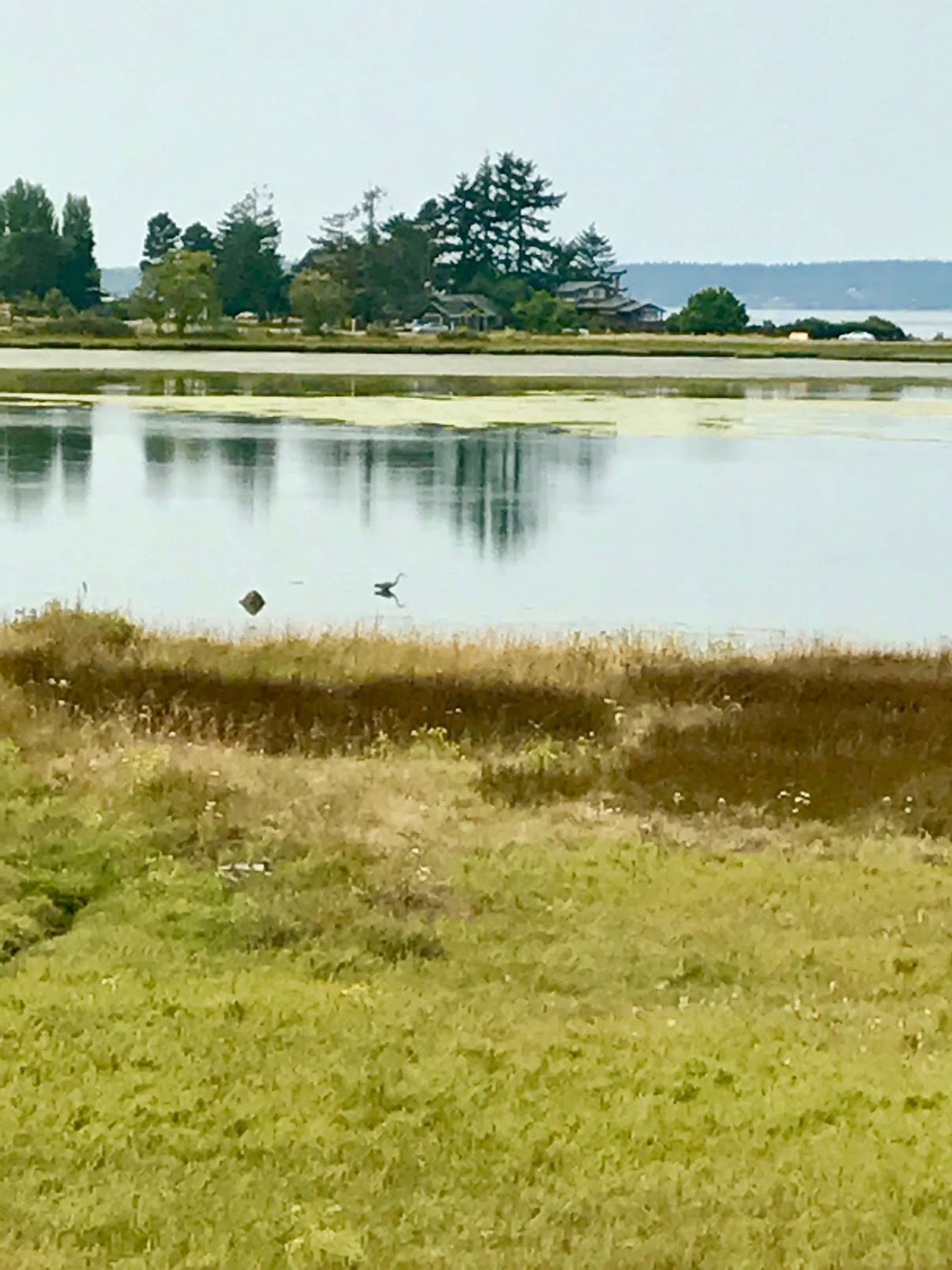
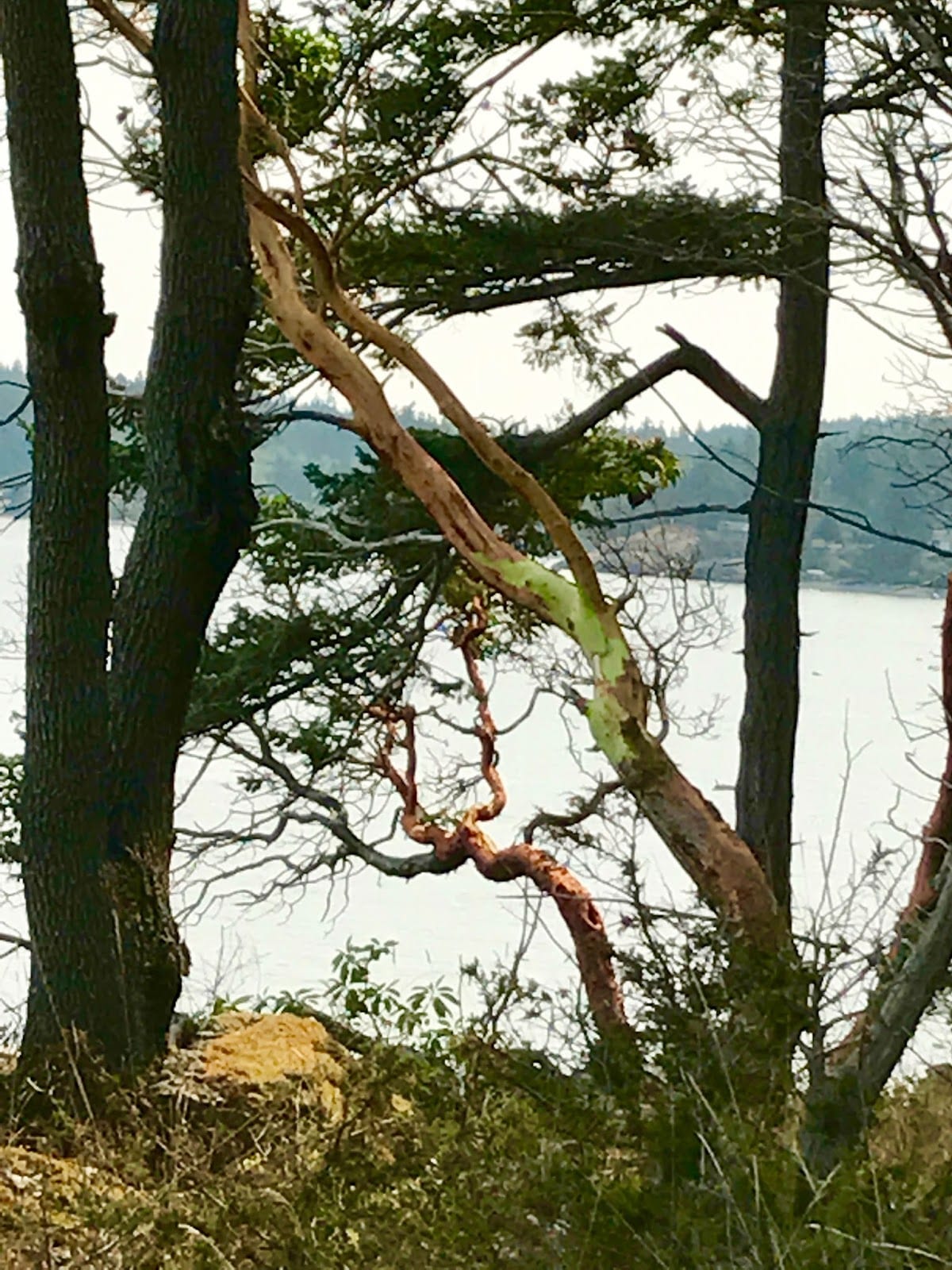


It started when I saw a meme (I know, memes. Ugh. But sometimes…) that said: It doesn’t matter whether the glass is half full or half empty. Remember, the glass is refillable.
I was struck by how easy it is to get trapped into the idea that there are only two ways to see that glass. So often, we convince ourselves that there are only opposing ideas – black or white, right or wrong. We are all familiar with the sayings that begin with “there are two kinds of people: those who….” I liked the notion that the glass was refillable. I adopted it. I wrote it down. I told my kids about it.
To be certain, there are times when we want to fill that glass up higher, and when it makes sense to do so. When one of my daughters does poorly on an exam or school project, I want to remind her that there is always time to do better, that she can move beyond this difficult moment and learn from it and grow. She can be sad that the glass seems half empty, acknowledge it, and then make an effort to create a different scenario next time.
But yesterday, while my mind was wandering, I bumped up against the limitations of that metaphor. I am someone who struggles with control-freakishness but I have learned to use mindfulness to lower my anxiety levels and my need to fix things. I realized that thinking about the glass as refillable moves me away from acceptance and creates the often false assumption that whatever situation I find myself in has to be changed in order to be tenable. I don’t want to lose the power of being in the moment with the glass as it is because I really believe that, often, this is where the magic of growth and learning come from. When we quickly try to move beyond our disappointment or discomfort with the current situation we find ourselves in (ie. racing to fill up that glass), we aren’t giving ourselves the opportunity to practice acceptance and really honor our experience in the present moment. Beyond that, there are unfortunately some things that can’t be altered or ‘fixed,’ and then what do we do with the glass?
My mom has Alzheimer’s and, as these things go, she is in need of constant care taking. That glass isn’t refillable. There is no way to reverse or fix what is happening. But, that doesn’t mean that I have to choose between seeing the glass as half full or half empty. Truthfully, it is both at the same time. It is half full and half empty. Yes, she unable to be independent and take care of her daily needs. AND, she has an incredibly loving husband who cares for her with love and affection and works hard to make sure that she is safe and comfortable. For now, that is the metaphor I want to embrace – the simultaneous existence of lack and abundance and their very reliance on each other in order to exist.
It occurs to me that our bodies and minds weren’t made to hold on to emotion. Nor were they made to reject it.
More and more, I think that the best method of experiencing emotions is the same way our bodies were made to digest food. We take it in, let it trace a path through the body where the pieces we need to utilize for repair and sustenance are extracted, and the rest is eliminated.
Too often, we treat emotions as something that we need to control and manipulate, but I think we’re going about it all wrong. At least, most of us are.
Lola has the right idea. She is a natural at simply ‘digesting’ her emotions. She lets them come, acknowledges them, sits still while they make their way through whatever process they go through, and extracts what she needs from them – whether it’s something she’s learned or a closeness she feels with someone important.
There are others in my life who I see become constipated, holding on to the emotion or the story it conjures in their heads, letting it affect them in ways that are profound and lasting. They either wall off the emotions and prevent themselves from seeing the benefits, or they gain some of the benefit, but then become embittered and embrace a victimhood that allows the unpleasant, dysfunctional parts of the situation to remain without being removed.
And there are still others who are bulimic – rejecting certain emotions or situations violently by purging the emotion or denying the feelings conjured up. In this scenario, the individual is ultimately denying themselves the learning and growth that comes from processing difficult emotions and coming to a deeper understanding of hurt and struggle and their place in it.
Without allowing our bodies and minds to fully process what we are feeling in any given situation, we fail to learn that, in every challenging scenario, there is a beginning, a middle and an end. There is a way to walk through pain and struggle, sadness and grief and suffering, and come out the other end a stronger, wiser person. But not if we become constipated or deny the reality of the situation altogether.
I am absolutely guilty of doing both of these things from time to time, and even if I do my best to process emotions like Lola, I can find it hard to not try to drive the process and make it fit my own timeline. But I’m learning that, like digesting my food, my body and mind have their own way of working with what I’m presented with, mining it for the good and letting go of the rest, and it is in my own best interest to simply let the process happen. I admit I’ve struggled a little with what that might look like, and the best conclusion I’ve come to thus far is to simply be mindful of the feelings and hold space for them, knowing that I can’t possibly predict how long it will take or how impactful it will be.
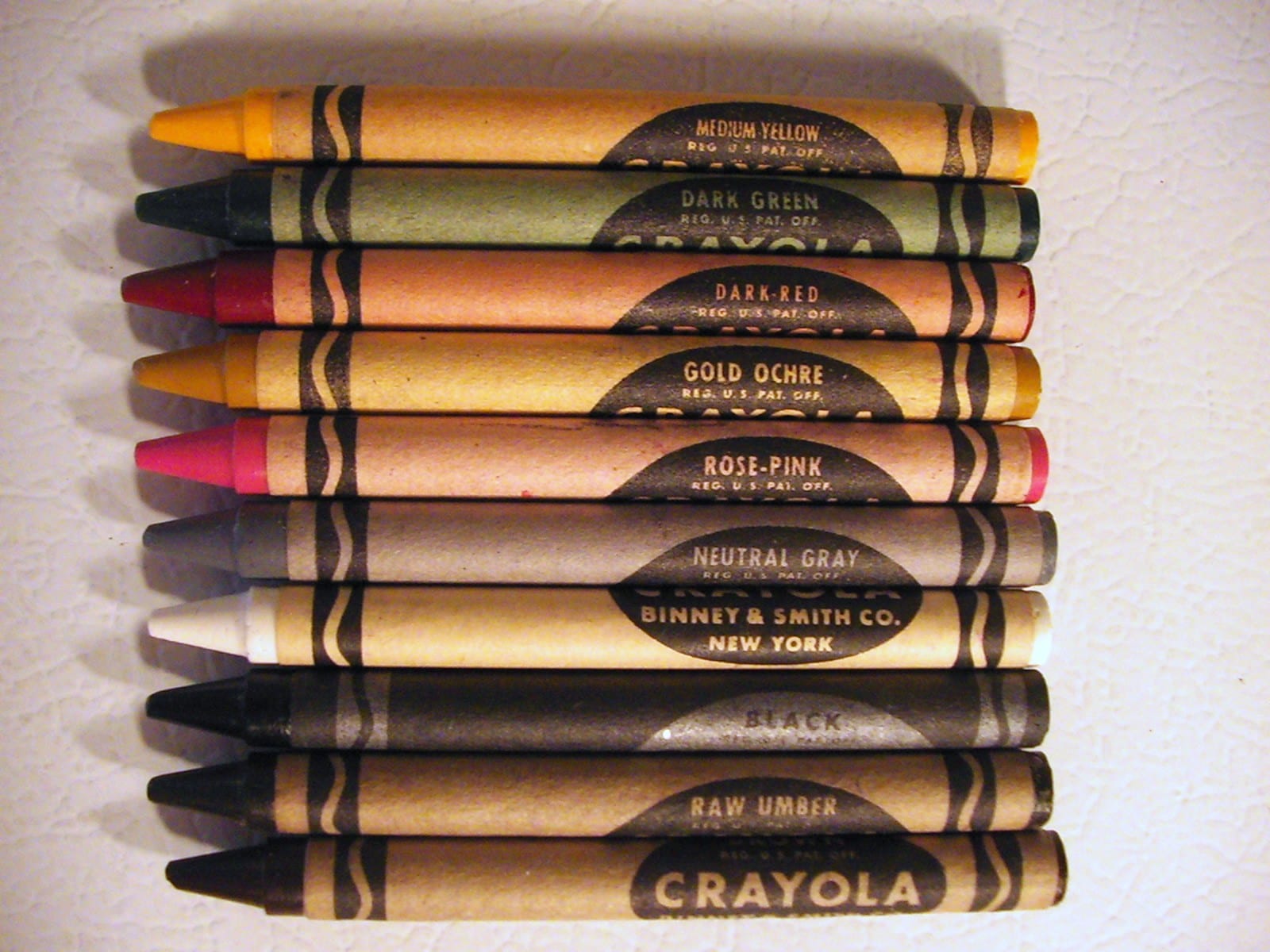 |
| By Kurt Baty – Own work, CC BY-SA 3.0 |
I know that, and yet, there is still something so appealing about believing that the world is black and white, that things are either good or bad, and so are people. It is both efficient in terms of time (I can decide whom or what to invest my energy in and when to walk away) and emotionally satisfying (no agonizing over the minutiae, just make a judgment and move on).
And it’s rarely true. In fact, I’m pretty sure the only things that are black and white are those two crayons in the box. (Don’t get me wrong: there are some things that, in my mind, are Absolutely Wrong and I will continue to acknowledge the nuances within, and still condemn the behavior.)
I am a social-justice-minded person. I have strong values and strong opinions and I love fighting for space for those without it, hearing new voices, expanding my view of the world. And sometimes, I read about something in the news and let the ethical warrior side of me take over. I re-post things and sign petitions and vow to boycott companies and sometimes, that feels like the exact right thing to do in terms of aligning my behavior with my values. But sometimes I get conflicted.
Like when scandals come up involving giant companies like Uber. While I went along with the suggestions to delete the app from my phone and vow to use other rideshare companies when the news came out about the CEO’s reprehensible behavior and choices that don’t support my values, I was still a little worried. Mostly because I thought about the drivers – the vast majority of whom I’ve ridden with that are pleasant and professional and friendly. The drivers who are working in this flexible gig-economy world because they have other jobs and obligations that don’t fit in with an 8-5 job. Maybe they’re going to school or parenting or taking care of their aging parents. Perhaps they don’t speak English well enough yet to get another type of job or this is the thing they’re doing while they train for a better job. Maybe they’re retired and on a fixed income and this is the way they put aside a little money in case of emergency. Doesn’t my boycotting the company they work for impact them more than it impacts the CEO, at least percentage-wise? He’s already a millionaire. Maybe losing some revenue will affect his company’s bottom line a bit and perhaps his ego will take a big blow, but for the driver who depends on every paycheck, I may be creating more hardship for them than their employer does.
Two weeks ago, I saw a message on a Facebook group I’m part of (a FB group that is all about supporting and empowering women), asking if anyone would be interested in joining a day-long women’s empowerment and employment event to provide a breakout session workshop. They were specifically looking for content that centered around wellness and well-being and self care. I was hooked. After a few emails, I realized that the event was being put on for women who are Uber drivers in Seattle and I admit to having a twinge of discomfort. Digging a little deeper, I discovered that this event centered around helping these women, who are mostly part-time drivers, understand the gig economy a little better and enabling them to find other ways to get into it to support themselves. Uber’s partner for this event is a local organization called Tabor 100, an “association of entrepreneurs and business advocates who are committed to economic power, educational excellence and social equality for African-Americans and the community at large.”
Whoa.
I signed up. Other breakout sessions included one that helped women envision their own paths as entrepreneurs or career growth, one dedicated entirely to self-care, and another that helped women learn to manage and grow their wealth. They provided a beautiful continental breakfast, a full lunch, free headshots by professional photographers, and the opportunity to get your business certified with the Office of Minority and Women’s Business Enterprises. Oh, and childcare. Full. Day. Childcare. For free.
This day was truly about empowering women to be part of the sharing economy in a way that works for them, with a ton of information about the opportunities that are out there as well as tips and tricks to more fully engage in those opportunities. My workshop centered on using mindfulness to ground yourself in your values, create personal boundaries, and find joy everywhere you go.
I vowed to go in with an open mind and I came out with a full heart. This is the kind of company (at least the Seattle version of it) that I can say I’m proud to have been associated with, even for just one day. This was not some gimmick to show the world that Uber is a friendly company and win back shareholders. I don’t even know that it was widely publicized. This was an honest attempt to acknowledge the employees of this company, remind them how important they are, and help lift them up.
So, it’s complicated. I reinstalled my app because I hope to see some of these women on the road soon and get to know them a little better.
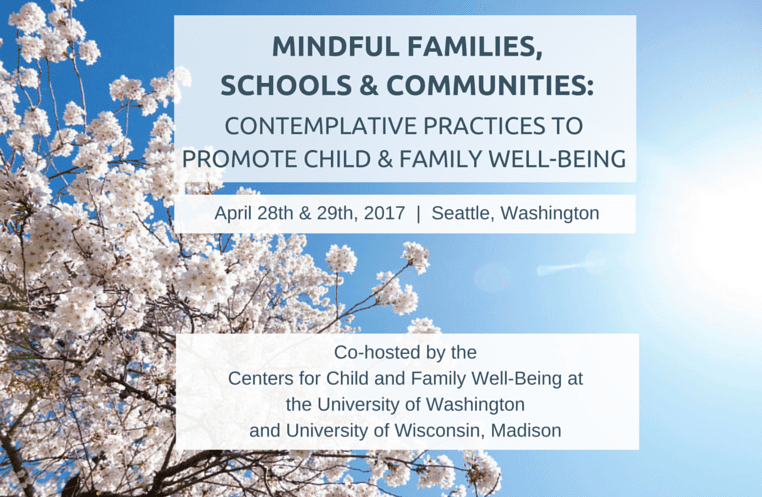
I spent the last two days at a Mindfulness Research Conference and my brain is full. I dreamt about mindfulness last night. Don’t ask me to describe it because it doesn’t make much sense, but trust me when I say it will be several days before all of the information I received filters down through the recesses of my brain and begins to create a clear picture. I was left with a tremendous sense of gratitude for all of the people who are doing such good work to uncover which practices and paradigms are the most effective. People doing work on a shoestring budget in the face of resistance to the idea that this is a science, in the face of challenges like racism and ablism and a culture that doesn’t embrace relationships between people as much as it embraces the power of money. More than once, I found myself breaking out in goosebumps as I listened to these brilliant, fierce, heart-centered folks present their work. Whew.
When I took the pups for a walk this morning before most of the rest of the neighborhood woke up, I had ample opportunity to quietly reflect on the last two days. I set out with the intention of simply paying attention to my surroundings, appreciating the flowers in my neighbors’ yards, the smell of the air after a hard rain last night, the sound of the birds talking to each other and their babies. It wasn’t long before I was distracted, however, which is akin to what happens sometimes when I sit down to meditate. Some people call it ‘monkey mind,’ but in this case, it was puppy mind. The dogs were pulling me in two different directions, each of them intent on tasting whatever they could – small sticks, bits of gravel, discarded wrappers and chewing gum they discovered on the ground. Over and over again, I tugged one back toward me with a harsh Leave It! I nearly laughed out loud when I realized that this is what I do to myself when my thoughts stray during meditation and I resolved to be more gentle. These puppies are doing what comes naturally to them – exploring their world with their mouths. Anger won’t change that. I can be more gentle in redirecting them (and simultaneously look forward to the day when I can take them for a walk and they will lift their heads up and look forward and walk smoothly instead of letting their noses lead the way in some winding treat scavenger hunt).

The actual events of the walk did not change with this realization, but my response did.
This is mindfulness. The recognition that there is a stimulus-response occurring and that I have the power to stretch out that hyphen between them, reflect on it a bit, and change the response to one that is more purposeful, more gentle, more positive without ever trying to change the stimulus.
As we rounded the next corner, I saw a neighbor up ahead walking to work. I didn’t want to shatter the quiet, so I just observed him as he walked into and then out of my field of vision. Once he had passed out of my sight, a small sedan came zipping down the street – going well over the speed limit – a young woman behind the wheel bopping her head to her music and peering in the mirror of her visor. I felt my blood pressure rise and lamented the fact that I was too far away from her to catch her eye and send her some kind of signal that she needed to Slow Down, for God’s sake!! My jaw clenched and my hands tightened around the leashes despite the fact that we were fully half a block from the street she had just raced down. I was furious.
Oh. Yeah. I was furious. This is mindfulness.
Noticing that word furious bouncing around in my brain, coupled with my physiological responses and the urge to dispel the tension in my hands and face and chest by yelling or flipping her off was enough to stretch out that hyphen space.

My friend and coach, Kris, posted something on her Facebook page yesterday that gave me pause. I watched it again this morning before taking the dogs for a walk and let it filter through my brain as we sidestepped puddles and admired the fat cherry blossoms and smelled the daphne perfuming the air.
Kris was talking about inspiration and how, sometimes, we sit and wait for inspiration to push us to action, and as we wait, we are frustrated and discontent. She wondered whether it is the discontent that is actually the source of inspiration, that if we take that first step toward action, the path will open up and we will begin to feel the motivation to continue. What if the frustration is the sense that there is a difference between what we say we want and what we are doing to get there, and that is actually the driving force, but our desire to wait for a clear sign to begin keeps us from doing anything?
Well, yeah, when you put it that way.
I have been feeling stuck a lot lately and as I walked and ruminated on Kris’ words, it struck me that I have been using that stuck feeling as an excuse not to change some things in my life that I can actually control.
I have long felt that I rely on wine and chocolate as crutches to make myself feel better, but since I am not overweight and I never get drunk, I haven’t sensed a reason to change my behavior.
But here’s the thing: when I indulge in those things in the evening, the narrative that goes through my head sounds a little something like this – I deserve this. It’s been a long day. Or – It’s a pretty small vice and I don’t do it every night.
More often than not, the next morning, I shake my head at myself, wishing I hadn’t had that extra piece of Easter candy (damn you, Cadbury mini-eggs!), and sometimes I even go so far as to come downstairs and throw the remainder of the bag away. And I wonder what message I’m sending to my girls when they see me with a glass of wine almost every night.
The incongruence between what I say I want – to be mindful of food as fuel, to be active and physically healthy – and how I act is grating. And this shows up in other places in my life, too. I see in my Facebook groups that there are other writers who are getting their freelance work published once a week and I feel guilty – I should be out there hustling more work that is visible because the memoir I’m working on won’t see the light of day for a year or more.
Often, the way for me to get clarity on things like this is to let my mind create a picture, and this morning was no exception. I imagined myself standing on a beautiful beach, dazzled by all the little, shiny things dotting the sand. There are rocks polished by the surf, fully intact shells, smooth pieces of driftwood. I walk along and gather the ones that are the most intriguing to me, filling my hands and pockets and not really thinking about what I’ll do with them or where I will put them. I’ll figure that out later. Right now, they are a tangible sign of what I have – like publishing credits or a wine cellar that’s full. I feel the land beneath my feet and I am grounded. This is real. I can walk like this forever, back and forth.
But eventually, my hands are full and I’ve walked the length of the beach. And I realize that what I really want is to be out there, in the ocean, floating, being lifted and held and open to possibilities. When I’m in the water, that’s my inspiration, my true passion, my purpose. It is where I can be fully supported and I’m able to really get some perspective. When I float in the water, I can look back at all of the glittery gifts on the beach in their entirety and really discern which ones speak to me. I don’t have to gather armfuls of things just because they are lovely, I can truly choose the things that are congruent with the big picture of who I am and what I truly want. And I can come back in to the beach at any time, but when I remember that the floating, the be-ing is where I am most grounded, that it is here where I draw my inspiration, the beach seems like a place for occasional visits, not someplace to dwell and get caught up in the doing and the gathering.
![]()
Thanks for visiting my site. I’m driven by the exploration of human connection and how we can better reconnect to ourselves, our families, and our communities. Aside from my books, I hope you’ll check out my blog, and some of my other writing to find more perspectives and tools.


